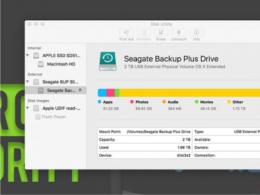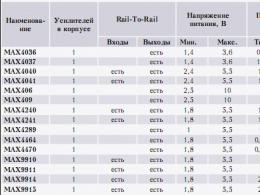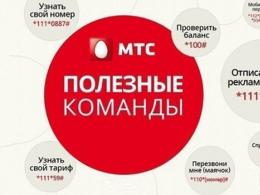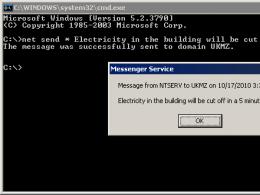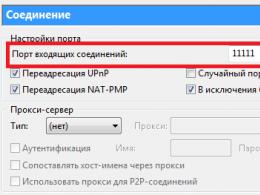Applied informatics in the economy of NNGAS. Computer Science (Department of Applied Mathematics)
The following main professional educational programs of higher education are implemented at the Department of Applied Informatics and Statistics:
General information
1. Direction: Applied Informatics
Direction code: 09.03.03
Qualification: bachelor's degree
Entrance exams: Russian language, mathematics, physics
Form of financing: budget and paid
Professional specialization:
Information Systems Specialist
- 1-C programmer
- business analyst
- IT project manager
Within the scope of the direction "Applied Informatics" profile is implementedApplied informatics in economics
2. Direction: Software Engineering
Direction code: 09.03.04
Qualification: bachelor's degree
Entrance exams: Russian language, mathematics, computer science and ICT
Form of financing: budget and paid
Within the scope of the direction "Software Engineering" profile is implementedDevelopment of software and information systems ().
WHAT IS APPLIED COMPUTERS
In applied computer science, the emphasis is primarily on the study of practically oriented knowledge, skills and abilities. Fundamental questions in computer science are addressed in engineering level. Engineers work at all stages of the life cycle of information systems, including their planning, design, preparation of technical documentation, testing and maintenance, as well as applied research.
Applied informatics is the engineering practice of storing, processing and transmitting economic, managerial and legal information to solve substantive problems of business and society.
The practical scope of applied informatics includes:
- analysis subject area and requirements for business applications;
- modeling of processes, data and objects of the subject area;
- analysis of compliance of information systems and technologies with the requirements of the subject area;
- defining and ensuring the implementation of design specifications and business application architecture;
- creation and implementation of business applications.
The specific content of applied computer science is determined by the federal educational standard, as well as professional standards in the field of IT.
WHAT ARE THE SPECIFICS OF SOFTWARE ENGINEERING
The “Software Engineering” direction has as its main task the organization, management and implementation of a rational approach to the creation of complex software products.
The need for competent organization of software development, operation and maintenance in the digital economy will only increase.
In accordance with the software engineering profile, students receive specialization in the following areas:
- configuration and integration of systems on the 1C platform (1C programmer);
- system Programming (system programmer);
- development of distributed systems based on Web protocols (Web developer).
The scope of activity of a software engineer includes a number of areas, each of which has its own technologies and methods to support:
- determination of requirements for a software system (software requirements)
- architecture design software systems, structure of its components, interface diagrams (software design)
- coding, verification, testing and debugging of programs (software construction)
- support and maintenance of software systems (software maintenance) and much more.
WHO IS THERE TO BE TRAINED IN NNGASU?
In accordance with the current federal state educational standards, educational programs should be focused on mastering the labor functions of certain professional standards in the field of IT (link).
Educational programs of different profiles have the same basic disciplines, but differ in variable disciplines. Students receive a general bachelor's qualification in the direction of "Applied Informatics" or "Software Engineering", while mastering additional professional specialization, determined by the profile.
Main purpose of activity information systems specialist consists of creating (modifying) and maintaining information systems that automate organizational management tasks and business processes in organizations of various forms of ownership.
Main purpose of activity systems analyst is the development, restoration and maintenance of requirements for software, product, tool, software and hardware complex, automated information system or automated system management (hereinafter referred to as the system) throughout their life cycle.
Main purpose of activity programmer consists of requirements engineering and software design.
Information Technology Project Manager Responsible for achieving project goals within the budget and deadlines approved by the customer. Carries out project management (planning, organization of execution, control and analysis of deviations) in the field of creation and/or commissioning of information systems.
Demand for GRADUATES IN THE LABOR MARKET
If we consider the demand for professions defined by professional standards, we can see that the need for IS specialists and system analysts, which are the focus of all profiles, according to the job site superjob.kg in November 2017 amounted to 35% of all IT vacancies.
Programmers are in demand in 38% of cases. IT project managers are needed in only 2% of cases, but the latter earn the highest salaries.

Number of vacancies in specialties that meet professional standards in the field of IT
In terms of salary level, system analysts and programmers are in 4th place, second only to professions that are not yet often in demand.

Average salary of vacancies that meet professional standards in the field of IT
(website superjob.ru, November 2017)
Department of Applied Informatics and Statistics
The Department of PriIS was created in 1999 to support the specialization Wirtschaftsinformatik (economic informatics) within the framework of the international Tempus Tacis project for training students of NNGASU together with the German university FH Köln.
Currently, the department has 9 full-time teachers, including 1 doctor and 4 candidates of science. There are also three graduates of the department working in the department.
The scientific work of the department is carried out in the following areas:
- modeling of economic processes;
- business analytics;
- project management;
- distance learning methodology.
Within these areas, three dissertations were defended, two certificates of registration of computer programs were received, more than 10 contractual works were completed with various enterprises, and three large specialized software systems were introduced at enterprises.
Partnership with “top” IT enterprises
To ensure that the level and content of training corresponds to the real tasks of practice, close partnerships with IT enterprises are necessary. Since 2007, the Department of Applied Informatics has been working closely with such serious Russian enterprises as 1C Company, Mera-NN, and BaseGroup Lab.
Page materials provided by NGASU (Sibstrin). Here you can get electronic copies the main educational and teaching aids of the department currently used.
All files are presented in the form of documents.pdf, or in archives.zip, the contents of which are Word documents(versions 2007 and higher)
General computer science course
Computer science. Basic course
U textbook in 3 parts for bachelors of all directions studying the discipline “Informatics”. Authors: Vorobyova A.P. (part 1), Ershova E.E. (part 2), Kislenko N.P. (part 3).
Kislenko N.P. Fundamentals of computer technology. Tutorial. Novosibirsk: publishing house NGASU, 2002
The textbook covers the course program " Information Technology", read to full-time students of NGASU specialty 071900 - " Information Systems and technology."
The manual is written in accordance with the course program. Due to the fact that part of the program is set out in methodological materials previously published by the department, the manual offers mainly material related to the in-depth study of information technology by students of this specialty.
The manual consists of 4 sections corresponding to the main aspects of the study of information technology. Section 1 is devoted to general theoretical issues of computer science, information systems, data representation and measurement. Section 2 provides basic concepts related to PC hardware - classification is given modern computers, PC architecture is discussed in detail. Section 3 is called "Software" personal computer" and contains basic information about the system and application software, used on a PC. Section 4 discusses network information technologies as applied to the Windows operating system.
Numerical methods, solving engineering problems, MathCAD
Yu.E. Voskoboynikov, A.F. Zadorozhny, L.A. Litvinov, Yu.G. Black. SOLVING ENGINEERING PROBLEMS IN MATHCAD PACKAGE: textbook allowance; Novosib. state architecture-builds University (Sibstrin). – Novosibirsk: NGASU (Sibstrin), 2013. – 120 p.
The tutorial discusses the solution of engineering problems in the MathCAD mathematical package, both using the built-in functions of the package and programming the necessary computational algorithms.
Yu.E. Voskoboynikov, A.F. Zadorozhny. Basics of working in the MathCAD package
textbook allowance/Novosib. state architecture-builds University (Sibstrin). - Novosibirsk: NGASU (Sibstrin), 2006. - 138 p.
The tutorial covers the basic structures of the built-in language of the mathematical package. The basics of working in the MathCAD package for creating documents, plotting graphs, matrix and vector operations, programming the main types of computational algorithms (linear, branching and loops) and generating data files are described in detail. The presentation is accompanied by a large number of examples and tasks, which contributes to better assimilation of the material.
Voskoboynikov Yu.E. Programming in the mathematical package MathCad. Novosibirsk: publishing house NGASU, 1999
The guidelines discuss the basic structures of the built-in language of the Mathcad Professional mathematical package and their use for programming the main types of computational algorithms (linear, branching and loops). The presentation is accompanied by a consideration of a large number of examples and problems, which contributes to better assimilation of the material.
The guidelines are intended for full-time students of all specialties studying computer science, and are also useful for graduate students and engineers who use this mathematical package in their calculations.
Yu.E. Voskoboynikov, V.F. Points. PROGRAMMING AND SOLVING PROBLEMS IN THE MATHCAD PACKAGE. TUTORIAL. NGASU. 2002. – 138 S.
The tutorial describes in sufficient detail the MathCAD designs (Russified version of MathCAD2001i) necessary for the implementation various types algorithms: linear, branching and cyclic. The main attention is paid to the development of program modules - MathCAD subprograms-functions. The implementation of the modular programming method is discussed. The solution of “typical” problems encountered in the calculation and projection of building structures is also discussed and the issues of “import and export” of data in the MathCAD package are discussed.
Voskoboynikov Yu. E.
Construction of regression models in the MathCAD package: textbook. allowance / Yu. E. Voskoboynikov; Novosib. state architecture-builds univ. – Novosibirsk: NGASU (Sibstrin), 2009. – 220 p. ISBN-978-5-7795-0422-5
The textbook contains basic theoretical principles for the following sections of regression analysis of experimental data: regression models and regression modeling, paired and multiple regression analysis. The necessary calculation ratios are given. Much attention is paid to the implementation of these relationships in the MathCAD mathematical package. The tutorial contains a large number of examples and copies of fragments of MathCAD documents, which will allow students not only to better understand and assimilate the educational material, but also to effectively use the MathCAD package when performing coursework and thesis.
The textbook is intended for undergraduates and graduate students of technical specialties.
Attention! With textbook Yu.E. Voskoboinikov "Regression data analysis in the MATHCAD package" (with CD, Lan publishing house, 2011) You can find it at
A.P. Vorobyova. Standard numerical methods for solving problems using the MathCad package. Laboratory workshop. Novosibirsk, NGASU (Sibstrin), 2018
Laboratory workshop for full-time students of the "Construction" major. Contains tasks for laboratory work on numerical methods and examples of their implementation
I.A. BEDAREV, Yu.V. KRATOVA, N.N. FEDOROVA, I.A. FEDORCHENKO. Calculation methods in the MathCAD package. NOVOSIBIRSK, NGASU (Sibstrin), 2013.
The tutorial provides methods for approximate solution of nonlinear algebraic equations, systems of linear algebraic equations, methods of interpolation, optimization, numerical differentiation and integration, computational approaches to solving Cauchy problems and boundary value problems for ordinary differential equations, as well as finite-difference methods for solving partial differential equations. Examples of implementations of these numerical approaches are given, both based on standard features MathCAD package, and using the programming tools of this environment.
Programming languages
A. P. Vorobyova, M. S. Soppa. Turbo Pascal programming system: textbook. manual: ed. NGASU (Sibstrin). – 2nd ed., revised. and additional – Novosibirsk: NGASU (Sibstrin), 2006. – 136 p.
The first part of the manual covers the basic concepts operating system MS DOS, Norton Commander tool shell program, as well as work in the integrated Turbo Pascal environment. The second part is devoted to the basics of programming in the Turbo Pascal language. The manual contains a fairly large number of test questions and tasks for independent work, promoting better assimilation of the material.
The textbook is intended for students of all specialties and forms of study.
LECTURES ON PASCAL FOR IST STUDENTS
| , 2009 |
LITVINOV L.A., FIRST STEPS IN PROGRAMMING IN TURBO PASCAL LANGUAGE. LABORATORY PRACTICUMIN THE COURSE "INFORMATICS" (2011)
| Download the manual in ZIP archive |
I.N. Mukhina, N.P. Kislenko. Computer science. Individual assignments and guidelines for students of specialty 230201 "Information systems and technologies"
methodical instructions/ Novosib. state architecture-builds University (Sibstrin). - Novosibirsk: NGASU (Sibstrin), 2008. - 76 p.
The guidelines offer a large number of practically interesting and useful tasks on the basics of programming.
Information technology, office programs
Ershova E. E. Laboratory workshop on modern computer technologies. Part 1. Word textbook. allowance; Novosib. state architecture-builds University (Sibstrin). - Novosibirsk: NGASU (Sibstrin), 2007. - 136 p.
The textbook is written in accordance with the program of the courses "Informatics" and "Information Technologies", contains laboratory work covering the main capabilities Word editor, used to create various documents: letters, congratulations, reports, coursework and theses, reports, electronic documents and textbooks, electronic tests, etc. Each laboratory work is provided with detailed recommendations for its successful completion.
The textbook is intended for students of specialty 040201 "Sociology", it will be useful for students of other specialties and teachers as practical guide in learning the Word editor.
Ershova E. E. Laboratory workshop on modern computer technologies. Part 2. Excel tutorial. manual / E. E. Ershova; Novosib. state architecture-builds University (Sibstrin). - Novosibirsk: NGASU (Sibstrin), 2007. - 80 p.
The textbook is written in accordance with the program of the courses "Informatics", "Probability Theory and Mathematical Statistics", "Information Technologies" and "Mathematical Modeling" social processes", contains laboratory work covering the basic capabilities of electronic Excel tables, used in solving various mathematical and sociological problems. Each laboratory work is provided with detailed recommendations for its successful completion.
The textbook is intended for students of the specialty 040201 "Sociology", it will be useful to all students and teachers as a practical guide in the study spreadsheets Excel.
Ershova E.E., Ershov I.V. Laboratory workshop on modern computer technologies. Part 3. MathCAD textbook. manual / E. E. Ershova, I. V. Ershov; Novosib. state architecture-builds University (Sibstrin). - Novosibirsk: NGASU (Sibstrin), 2007. - 52 p.
The textbook is written in accordance with the program of the courses "Informatics", "Probability Theory and Mathematical Statistics", "Information Technologies" and "Mathematical Modeling of Social Processes", contains laboratory work covering the main capabilities of the MathCAD system, used in solving various mathematical and sociological problems . Each laboratory work is provided with detailed recommendations for its successful completion.
The textbook is intended for students of specialty 040201 “Sociology”; it will be useful to all students and teachers as a practical guide in studying the MathCAD 2001 Professional system.
A.P. Vorobyova, Yu.A. Galkina. Basics of working in Microsoft Access. : textbook manual: ed. NGASU (Sibstrin). – Novosibirsk: NGASU (Sibstrin), 2010. – 148 p.
The tutorial covers theoretical basis and operating principles Microsoft DBMS Access 2003. The contents of the manual are divided into two parts. The first part provides the basic theoretical principles necessary for the successful development of Access. The second part contains laboratory work on the main sections of Access: creating simple and related tables, queries, forms, reports.
Probability theory, mathematical statistics
Voskoboynikov Yu.E., Balanchuk T.T. Probability theory and mathematical statistics (with examples in Excel): Textbook - Novosibirsk: NGASU (Sibstrin), 2013. - 200 p.
The textbook examines the basic concepts of probability theory relating to random events, discrete and continuous random variables. Much attention is paid to sections of mathematical statistics: point and interval estimation of parameters of random variables, testing of statistical hypotheses. The tutorial contains copies of a large number of fragments Excel documents, which will allow students not only to better understand the educational material, but also to effectively use the Excel program when completing coursework and dissertations.
The textbook is intended for students studying in the areas 080200.62 “Management”, 080100.62 “Economics”, 230400.62 “Information Systems and Technologies”, as well as undergraduates and graduate students of relevant specialties.
E. I. Timoshenko, M. S. Soppa Problems and exercises in probability theory
The textbook is intended for use in the educational process by students of all specialties and forms of study when studying probability theory. This discipline is an integral part of general mathematical training in accordance with the requirements reflected in the State Standards. This manual provides the specified course with exercises and tasks.
The collection consists of ten sections, each of which contains tasks recommended for solution in both practical exercises and seminars, as well as during students’ independent work.
Voskoboynikov Yu.E., Timoshenko E.I. Mathematical statistics: Textbook. Novosibirsk: publishing house NGASU, 2000
Textbook Yu.E. Voskoboynikova, E.I. Timoshenko "Mathematical Statistics" contains the most important sections of mathematical statistics: point and interval estimation of distribution parameters, testing of various statistical hypotheses. A clear and concise presentation of educational material certainly contributes to high-quality learning training course. A large number of examples given will allow students to better understand and assimilate not only general theoretical principles, but also possible areas of application of mathematical statistics.
Although the textbook is written in accordance with the course program "Mathematical Statistics" for specialty 060800, it will also be useful to students of other specialties at construction universities.
Voskoboynikov Yu.E., Timoshenko E.I. Mathematical statistics with examples in Excel: Textbook. Novosibirsk: publishing house NGASU, 2006, - 154 p.
The textbook contains the most important sections of mathematical statistics: point and interval estimation of distribution parameters, testing of various statistical hypotheses. A large number of examples are given that will allow students to better understand and assimilate not only general theoretical principles, but also possible areas of application of mathematical statistics. The tutorial contains solutions to typical examples in the Excel spreadsheet processor.
M. S. Soppa, A. F. Voronin. Theory of Probability and Mathematical Statistics textbook allowance/Novosib. state architecture-builds University (Sibstrin). - Novosibirsk: NGASU (Sibstrin), 2007. - 76 p.
The textbook examines the basic concepts of probability theory relating to random events, discrete and continuous random variables. Much attention is paid to sections of mathematical statistics: point and interval estimation of parameters of random variables, testing of statistical hypotheses, elements of the theory of random processes.
The textbook is intended for students of specialty 230201 "Information systems and technologies."
Optimization methods, mathematical programming
Kiseleva E.V., Solovyova S.I. Mathematical programming (linear programming): Textbook. Novosibirsk: publishing house NGASU, 2002, - 146 p.
The textbook is intended for students of specialty 060800 "Economics and Management (in Construction)" of all forms of study. Written in accordance with the course syllabus "Mathematical Programming". Contains 7 topics and application "Application" Excel programs to solving linear programming problems." Along with the presentation of the theory, the solution of a large number of examples and problems is considered in detail.
Given Control questions by topic and tasks for individual assignments and independent solutions.
Econometrics
Voskoboynikov Yu. E. Econometrics in Excel: textbook. allowance. Part 1. Paired and multiple regression analysis / Yu. E. Voskoboynikov; Novosib. state architecture-builds univ. – Novosibirsk: NGASU (Sibstrin), 2005. – 182 p.
The textbook contains basic theoretical principles on the following sections of econometrics: econometric models and econometric modeling, paired and multiple regression analysis. The necessary calculation ratios are given. Much attention is paid to the implementation of these relationships in the Excel spreadsheet processor. The textbook contains a large number of examples and copies of fragments of Excel documents, which will allow students not only to better understand and master the educational material, but also to effectively use Excel when completing coursework and dissertations.
Voskoboynikov Yu. E. Econometrics in Excel: textbook. allowance. Part 2. Analysis of time series / Yu. E. Voskoboynikov; Novosib. state architecture-builds univ. – Novosibirsk: NGASU (Sibstrin), 2008. – 152 p.
The textbook contains the basic theoretical principles necessary for solving problems of time series analysis. The necessary calculation ratios are given. Much attention is paid to the implementation of these relationships in the Excel spreadsheet processor. The manual contains a large number of examples and copies of fragments of Excel documents, which will allow students not only to better understand and assimilate the educational material, but also to effectively use Excel when completing their thesis and coursework.
Voskoboynikov Yu.E., Voskoboynikova T.N. Guidelines for laboratory work in econometrics. Novosibirsk: ed. IME, 2006 - 62 p.
The guidelines contain a description of laboratory work and the necessary calculation ratios for their implementation. The main attention is paid to the implementation of these relationships in the Excel spreadsheet. There are also two test papers and recommendations are given for their implementation
Internet technologies
Kislenko N.P. Basics of working on the Internet. Methodical instructions. Novosibirsk: publishing house NGASU, 2000
The guidelines describe the global computer network Internet and means of working with it - Internet browser Explorer, e-mail,FTP.
Master's degree is a way to improve the qualifications of bachelors through in-depth study of selected areas, as well as expanding research activities.
According to profile educational program Under this direction, students receive in-depth knowledge in the following areas:
Configuration and integration of systems on the 1C platform ( 1C programmer);
Systems-based business intelligence artificial intelligence (business analyst);
Typical tasks that a 1C programmer solves:
Administration of 1C databases;
Automation of company activities;
Setting up and administering various configurations based on 1C;
Programming based on 1C.
Business analytics is the most promising IT profession
BigData is the future of computer science;
Business optimization based on analytics will be the main method of competition in the future;
Of the six fastest-growing IT specialties, three are related to analytics.
Typical tasks of a business analyst:
collection and analysis of customer requirements;
researching;
business process modeling (BPMN, EPC, IDEF, UML languages);
analysis of large volumes of data;
development of databases for production management systems;
staging technical assignments for software development or modification;
building processes for collecting, storing and analyzing data;
programming machine learning systems.
BaseGroup Labs Certificate
UNGASU master's students who successfully complete analytics courses can receive a certificate from BaseGroup Labs, the manufacturer of the domestic analytical platform Deductor.
Research by master's students of NNGASU
In addition to in-depth study of business analytics and 1C programming, masters of applied informatics take part in scientific research in various applied areas. Below are examples of some master's studies:
Development of algorithms for converting geographic coordinates for a geographic information system
Algorithms implemented on JavaScript, are used to link geographic coordinates in Yandex maps with graph coordinates of waterways used in voyage planning systems of river shipping companies.
Determining a suitable algorithm for calculating distances using support programs, written in C, and using the getDistance function built into Yandex.Maps.
Development of an environmental monitoring system Eco-routs
The environmental monitoring system was developed by master's student D. Stepanov in collaboration with the UNESCO International Chair at NNGASU in 2016. The system is available at https://eco-routes.appspot.com.
With its help, you can determine the level of exceeding the maximum permissible concentration when driving in a traffic jam.
Development of a system for predicting the results of eSports tournaments based on Data Mining methods
In traditional sports, several data analysis methods are used to determine the chances of winning: those based on a predictive rating system, for example, the Elo rating. The same methods can be used in eSports disciplines. But this method is too inaccurate, and most serious forecasts are calculated using proprietary methods and systems that are not publicly available. Therefore, there is a problem in constructing a methodology for such forecasting.
The research was carried out by master's student M. Razuvaev in two stages.
Stage 1. Development of a process for collecting and processing data to predict the results of e-sports tournaments: developing a parser program, cleaning the data and converting it to a single convenient format for further loading into a data warehouse.
2. Stage. Creating a forecasting model based on one of the Data Mining algorithms: building several neural networks, testing the forecast quality.
The study's forecast for one of the largest tournaments turned out to be more accurate than the usual Elo rating.
In accordance with the economic profile of applied informatics, students receive specialization in the following areas:
Configuration and integration of systems on the 1C platform ();
Business analytics based on artificial intelligence systems ();
Development of distributed systems based on Web protocols ().
There is a constantly growing demand for specialists in these areas, which guarantees the employment of graduates.
1C programmer
Typical tasks that a 1C programmer solves:
Administration of 1C databases;
Automation of company activities;
Setting up and administering various configurations based on 1C;
Programming based on 1C.
Russia is automated mainly on 1C
1C programmer is the most sought-after programmer in Russia.

Demand for programmers in November 2017 (according to superjob.ru and hh.ru)
In terms of the number of vacancies, 1C programmers have been leading for several years on a variety of job sites. At the same time, the average salary of 1C programmers is second only to the salary of C++ and DB programmers.
1C programmers have been the most sought-after IT specialists in Russia since 2009. This is not surprising, since the 1C system is used by 1.5 million Russian enterprises.
The largest increase in wages over the past ten years was also observed for 1C programmer vacancies. In terms of salary, 1C programmers are second only to C++ and C# programmers, but the demand for the latter is much less. There are vacancies for 1C programmers in any city in Russia.
It can be argued that in the future the need for 1C programmers will only grow. In the market of integrated systems in Russia, the 1C system has shown steady growth since 2004. Since 2013, the share of automated workplaces in Russia exceeds 83% by 1C. We can say that Russia is largely automated using 1C.
Level of mastery of the profession
The 1C company has adopted a sequential certification system. We prepare students at the level of knowledge of the 1C Professional certificate. In addition, our students have been winning prizes in various competitions held by 1C for many years.
Business analyst
What is business analytics?
The reality of modern business is working in a huge flow of data. This reality is even designated by the special term BigData. Turning this abundance of data into a resource that generates revenue or reduces costs requires data collection, processing, and analysis.
Business Intelligence (BI) is a business technology aimed at monetizing data.
Business analysts are top-class specialists who are on the list of the most “advanced” IT specialties.
Of the top six fastest-growing IT jobs in the United States, three are forecast to be in analytics.

In Russia, analysts are on the list of the most in-demand and highly paid IT specialties. Unlike 1C programmers, the need for which is widespread, business analysts are needed by “top” enterprises, which, in conditions of fierce competition, are forced to constantly improve their business.

To improve a business, you must first understand it, and this requires analyzing the data that the enterprise has: business data. These types of problems arise in the following areas.
Retail
shopping cart analysis
study of temporary sales patterns (temporal patterns)
demand forecasting
Banking
customer segmentation
forecasting clientele changes
loan fee calculation
Telecommunications
identifying customer loyalty (minimizing marketing costs)
Insurance
fraud detection (studies of stereotypes in applications for payments)
risk analysis (minimizing losses of insurance companies)
Typical tasks of a business analyst:
Collection and analysis of customer requirements;
- researching;
- business process modeling (BPMN, EPC, IDEF, UML languages);
- analysis of large volumes of data;
- development of databases for production management systems;
- setting technical specifications for software development or modification;
- building processes for collecting, storing and analyzing data;
- programming machine learning systems.
Typically, business data is not very organized, and there is usually a lot of this data. Used to analyze business data special methods and technologies called Data Mining(data mining). These methods are associated with the general theoretical disciplines of computer science and mathematics.
In addition to studying the general theory of Data Mining at the Department of Applied Informatics, students receive specific skills for working in the domestic analytical platform Deductor by Base Group Labs. As of 2016, this platform ranks second in Russia among analytical platforms in terms of the number of implementations.
Data Mining is not only a technology in demand, but also a field of extensive scientific research. For those graduates of NNGASU who want to continue their scientific career, the doors are open master's degree in applied computer science in analytical economics.
Level of mastery of the profession
Our students have repeatedly won all-Russian business analytics competitions organized by Base Group Labs. Students who complete courses in analytics can receive a certificate from BaseGroup Labs.
Web developerThis specialty requires mastering a number of disciplines that can be useful to computer scientists of any profile:
Server-side programming in Java and PHP;
client-side programming in JavaScript;
administration of database management systems MS SQL, MySQL;
interface design based on usability principles;
web page design using raster and vector graphics Gimp and Inkscape;
vulnerability analysis program code Web applications, as well as the reliability of the Web server configuration;
programming mobile applications for iOS/Android;
creating websites using CMS systems.
It can be noticed that PHP language still remains the leading Web development language, so special attention is paid to its study at the Department of Applied Informatics.
Development of an environmental monitoring system Eco-routs
An example of what our Web development students do is an environmental monitoring system. It was developed by 2016 graduate D. Stepanov in collaboration with the UNESCO International Chair at NNGASU in 2016. The system is available at https://eco-routs.appspot.com.
With its help, you can determine the level of exceeding the maximum permissible concentration when driving in a traffic jam.
This work won second place in the International Olympiad in IT Technologies and won several other competitions.

